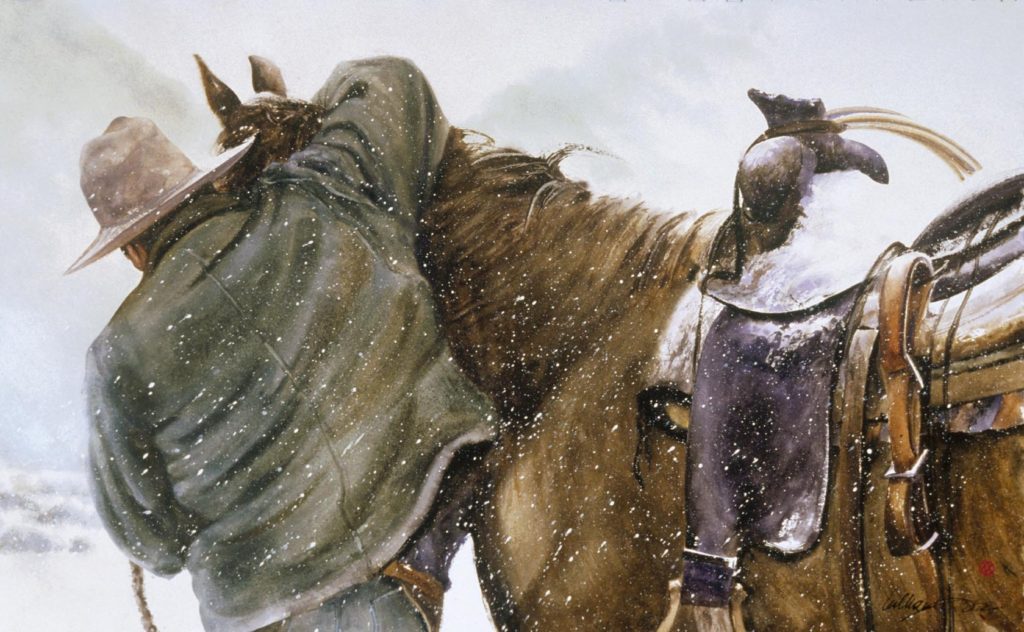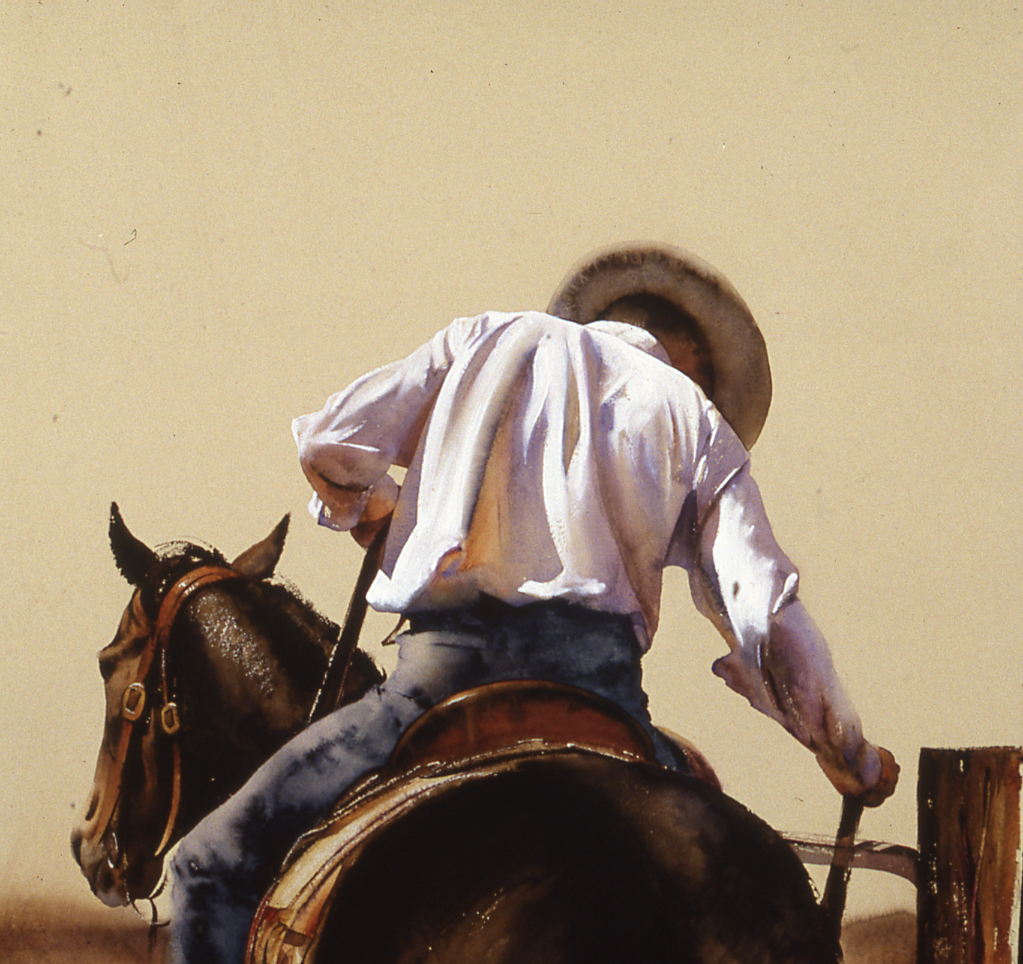
At the easel with William Matthews, award-winning watercolorist of the American West.
Written by Jenn Thornton
Contemporary artist William Matthews is cast from a kind of Frederic Remington mold but has his own strokes and sensibility. Widely admired for his watercolors of the American West, he’s produced a wide-ranging body of work, from paintings of landscapes and cowboy culture to Los Caballos, a monumental piece of public art for Dickies Arena in Fort Worth, Texas. Dig deeper and find a trove of other creative projects: illustrations for Close Range by Pulitzer Prize-winning author Annie Proulx, album covers for the likes of Dan Hicks and His Hot Licks, posters for rodeos and cowboy poets, an array of Western-centric neckties and even Martin Guitars.

If a thematic pattern is starting to emerge, then of course it would. Matthews makes an art of the West because he is rooted to it physically, spiritually, and creatively. The son of a gentleman ad exec and a fine artist mother, Matthews was born in Connecticut but raised out West, in San Francisco, a city that feeds artistic impulse. In Decades (the catalog of his retrospective at Scottsdale’s Western Spirit: Museum of the West), he divulged, “Raucous concerts, colorful posters, and new ways of looking for the world started to dominate my life.” On museum trips with his mother and grandfather, Matthews remembers gazing at the work of great artists (all those “rich buttery colors” of oil painters) that put him “closer to the process of creation, as if the window to the artist’s soul was cracked open. I caught the spark to paint on those days, but I had no idea where it would take me.” Spoiler: international acclaim.
Now based in Colorado, Matthews’ Denver studio is open “by appointment or by chance,” which is another way to say he’s a man with things to do, places to go and people to see. There’s plenty of folks lining up to see his work as well. He has exhibited all over North America, from Idaho to Elko, Nevada to New York. Internationally, he’s shown in Europe and the Far East.
It is a trajectory that doesn’t quite square for a man who, by his own admission in Decades, did not see himself amounting to very much, not in the go-to-school, get-a-job, and settle-down sense. In plainspoken terms: “I was a great disappointment to my family. I didn’t finish high school and I never went to college. But I never really doubted my instincts. There was an internal drive that was hard to explain. I was always restless but filled with curiosity. I trusted my intuition and more often than not, it turned out to be correct.” Indeed, once Matthews locked on to the idea of a creative life, he never looked back—life looked his way.
I was always restless but filled with curiosity. I trusted my intuition and more often than not, it turned out to be correct.
William Matthews
Even someone with no ideas about art or a man named William Matthews gets a good sense of what he’s about from his work. Overwhelmingly, it is his respect for “working hands,” the folks who toil with purpose, for hours and years on end. In that way, rural life is not all that different from making art. Both take sweat and a great deal of refining work, a lot of which is never done. Despite his affinity for Western themes, “I never intended to paint cowboys,” he confesses in Decades. “I was enamored with the West, it was my home. But until I came nose to nose with the buckaroos of the Great Basin, I didn’t know what the West really looked like. I’d driven the highways, but I’d never been off the pavement. The road has been long and circuitous, but such an adventure.”
Matthews may not have set out to capture the West, but few paint it with such astonishing subtlety or honesty. His is the work of spectacular landscapes, but also, and more poignantly, the region’s everyday authenticities. He is an artist with the rare ability not only to see but also express the beauty in the weathered and worn-out; to find the elegance in old, enduring, dignified things. “Having been raised in the US, my life’s vision is oriented towards the expansive opportunities that I feel as a Westerner,” Matthews says. “I present that sense of opportunity and wonder wherever I am. As an artist, I’m always drawn to the lone figure, whether horseback or afoot. I see that sense of independence and wanderlust in landscapes all over the world. I am very lucky to have been raised in the American West.”

Photographs: Artwork by William Matthews


